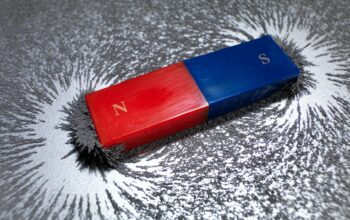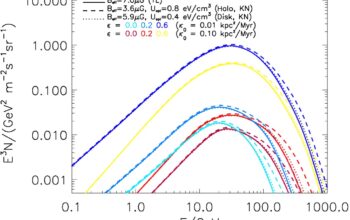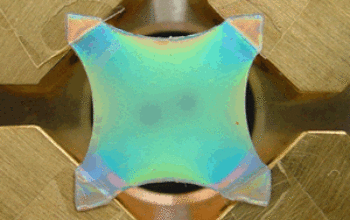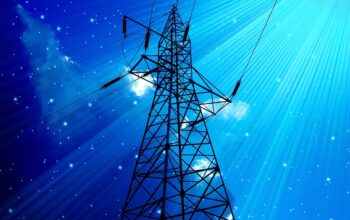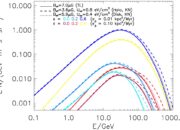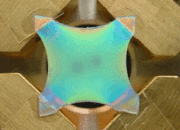Superconductivity is an intriguing phenomenon that has captivated physicists and materials scientists alike for decades. This state of matter, characterized by the complete absence of electrical resistance and the expulsion of magnetic fields, has far-reaching implications for technologies ranging from magnetic levitation to energy transmission. Among the myriad materials investigated, iron-based superconductors have emerged as a focal point in the quest for understanding the underlying mechanisms of superconductivity. This article strives to elucidate the recent advancements in the study of iron-based superconductors, shedding light on their unique properties and potential applications.
The fascination with superconductors can be traced back to the early 20th century but surged significantly with the discovery of high-temperature superconductivity in copper oxide ceramics in 1986. Since then, the field has expanded to include various classes of superconductors, including iron-based superconductors, which were first discovered in 2008. These materials exhibit superconductivity at comparatively high temperatures, igniting interest and facilitating extensive research aimed at unveiling their complex crystalline structures and electronic properties.
Iron-based superconductors comprise a diverse group of materials, frequently classified into two primary categories: iron pnictides and iron chalcogenides. Iron pnictides, such as LaFeAsO and BaFe2As2, incorporate elements from the nitrogen group of the periodic table. Conversely, iron chalcogenides, including FeSe and FeTe, integrate elements from the chalcogen group. Despite their chemical and structural diversity, a common feature among these materials is the presence of iron in their compositions, which plays a quintessential role in their superconductive properties.
The crucial interplay between the electronic structure and the lattice dynamics in these iron-based superconductors is fundamental to understanding the mechanism of superconductivity. Notably, the unique “multiband” phenomenon arises from the heterogeneous distribution of electronic states. In a multiband superconductor, multiple electron and hole bands contribute to the superconducting state, which has profound implications for the coupling mechanisms facilitating superconductivity. This intrinsic characteristic of iron-based superconductors is hypothesized to permit an interplay between spin fluctuations and electron pairing, providing rich opportunities for theoretical exploration.
The precise mechanism of superconductivity in iron pnictides and chalcogenides remains a pivotal question. Two competing theories currently dominate the discourse: the spin-fluctuation mechanism and the phonon-mediated pairing mechanism. The former posits that magnetic interactions and fluctuations of local magnetic moments substantially influence the formation of Cooper pairs. The latter theory, akin to traditional Bardeen-Cooper-Schrieffer (BCS) theory, suggests that lattice vibrations (phonons) facilitate electron pairing. Empirical studies utilizing techniques such as angle-resolved photoemission spectroscopy (ARPES) and muon spin rotation have been instrumental in elucidating these mechanisms, yet the complete picture remains elusive.
Recent developments emphasize the importance of material composition and stoichiometry in optimizing superconducting properties. Adjustments in doping levels can yield significant enhancements in transition temperatures (Tc) and critical fields. For instance, the introduction of alkali metals or substitution of non-magnetic ions leads to an evolution in the electronic structure that consequentially influences superconductivity. Such meticulous tuning may pave the way for the engineering of novel superconducting materials with superior performance metrics.
The benefits derived from iron-based superconductors are not merely of academic interest. Their application potential spans a plethora of technological sectors. Magnetic resonance imaging (MRI) machines, particle accelerators, and high-capacity energy transmission lines stand to gain substantially from the integration of superconducting materials. Moreover, advancements in cryogenic technology aimed at maintaining operational temperatures could amplify the utility of this class of superconductors, harnessing their attributes in practical applications.
Research on iron-based superconductors is not devoid of challenges. Scalability and fabrication of high-quality single crystals remain significant hurdles. The synthesis of large quantities of these superconductors with uniform properties is paramount for their application in industrial settings. Furthermore, the stability of superconducting states under external conditions, including magnetic fields and varying temperatures, requires diligent investigation.
In conclusion, the realm of iron-based superconductors is marked by a confluence of intricate physics and substantial application potential. The diversity of compositions and the intricate interplay of electronic structures offer a fertile ground for further research. Collaboration among physicists, materials scientists, and engineers is critical to unraveling the enigmatic behavior of these materials. As investigation continues, the knowledge gleaned from the study of iron-based superconductors is poised to have profound implications, potentially leading to the next generation of superconducting technologies that may revolutionize multiple fields.
In this landscape of exploration and innovation, the scientific community remains vigilant, hoping to unveil the secrets enshrouded within iron-based superconductors. As research progresses, the synthesis of theoretical insight with experimental validation is anticipated to illuminate pathways toward not only a deeper understanding but also practical advancements that harness the extraordinary revelatory power of superconductivity.


